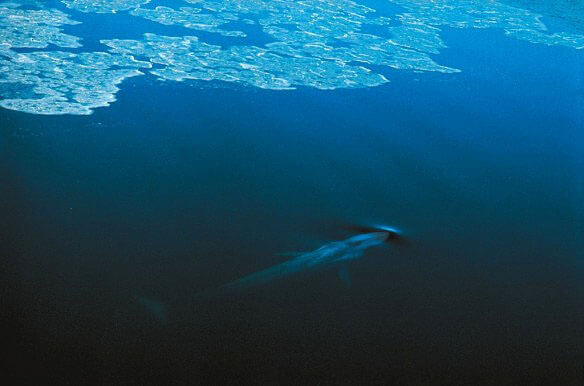“The ice is starting to form”: this observation is being made almost everywhere along the St. Lawrence of late. Its extent varies with the tides, temperature variations, and storms. Generally speaking, ice is more prevalent on the south shore than on the north shore. However, it forms just about everywhere on the river. Prevailing winds and currents transport the forming crystals and chunks of ice to the south shore. The same phenomenon also explains why whale carcasses are discovered more often on the St. Lawrence’s right bank.
Is it because the ice is beginning to form that no whale sightings have been reported this week? Perhaps.
Ice can also be used as a floating sunbed for resting seals. Off the coast of Les Bergeronnes, thousands of seals are observed drifting lazily with the current on January 15. Such a large gathering suggests that these are harp seals, which are seasonal visitors to the region. For this species, solid and extensive pack ice is essential for calving. The next few weeks of ice formation will therefore be crucial. Unfortunately, researchers from the Université du Québec à Rimouski have noted a certain downward trend in ice cover over the years.
Other seals have been observed, only in the water this time, near Baie-Comeau and Cap-des-Rosiers.
Ice sheets are also useful for belugas, which reside in the St. Lawrence year-round. They mitigate wave impacts during storms and provide relatively sheltered areas. Without this protection, belugas may have to travel greater distances to find calm waters.
However, if these drifting ice sheets shift too quickly, certain species of whales can find find themselves caught between two sheets or worse yet, trapped underwater. Fortunately, no such incident (article in French) has ever been recorded in the St. Lawrence Estuary.
Are ice conditions of interest to you? Thanks to its ocean forecasting tool, the St. Lawrence Global Observatory makes it possible to visualize ice conditions and trends over the course of hours, days or years. It’s fascinating!





